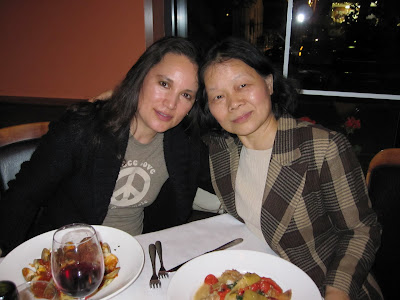9/11 Remembered, 20th Anniversary
 |
| Photo by Joseph Sohm |
When the Sept. 11 attacks occurred, I was in California. In horror, I watched one of the towers collapse on live television. My family friends Don and Sue Jenner lived in Tribeca on Greenwich Street, walking distance to the World Trade Center. They also both worked at CUNY Borough of Manhattan Community College in lower Manhattan.
When I was attending college on Long Island, the Jenners were like an aunt and uncle to me and often invited me into the city. I was always so grateful for their warm hospitality which belied the stereotype of frosty, uppity New Yorkers and made NYC feel like a real home to me. When staying with them, we attended Trinity Church Wall Street, and everyone I met there was also so kind and friendly to me.
 |
| Don and Sue Jenner at World Trade Center in front of Borders Books, 5 WTC, 1990s |
I was terrified for everyone. I felt a mixture of relief and a strange survivor guilt after learning my “aunt and uncle” and everyone I knew from the church fared better than many.
Sue was sleeping when the first plane hit. The Jenner’s apartment building was four blocks north of the World Trade Center complex. She said she heard the explosion and at the same time felt their building jump. The explosion was so loud and the movement so pronounced, she initially assumed there was an explosion on their roof. Their apartment windows did not face south, so they could not see what was going on unless they were on the ground level. Over the course of the morning, Sue said she saw 300-400 police officers rushing to the WTC. When one of the towers started collapsing, she was looking out the window of their apartment onto Greenwich St. and she said she saw wall-to-wall humans, arm-in-arm, a river of people running up Greenwich St. Don was standing on the ground level on Greenwich St. when the tower collapsed. He saw the debris cloud come up Greenwich St. and ducked into a nearby store just in time.
Visiting the site and neighborhood years later was profoundly emotional and unsettling. When visiting as a college student, I would stand in front of the Jenners' apartment complex and look up at the nearby towers and marvel at the sheer height and mass of them. At the time, they were such an iconic part of the New York skyline it was inconceivable that they could one day be gone.
Don moved into his Greenwich St. apartment in the mid-seventies not long after the Twin Towers were completed in 1973. When the World Trade Center was being designed and developed, some proclaimed it was the greatest building project since the pyramids, but it was also mired in controversy and public criticism. The uber-tall, boxy design of the Twin Towers, compared to the Empire State Building and Chrysler Building, was regarded by many as tasteless, a vulgar and arrogant intrusion into the New York skyline.
Ada Louise Huxtable, architecture critic for the Wall Street Journal and the New York Times, wrote of the World Trade Center in 1966, “Who’s afraid of the big, bad buildings? Everyone, because there are so many things about gigantism that we just don’t know. The gamble of triumph or tragedy at this scale—and ultimately it is a gamble—demands an extraordinary payoff. The trade center towers could be the start of a new skyscraper age or the biggest tombstones in the world.”
After the World Trade Center was completed, much of the office space in the towers sat empty for years, proving right the people who argued that the extra office space in lower Manhattan was unwarranted. Regardless, the lights were put on every night to make it appear as if the buildings were occupied and a success. Critics of the Twin Towers clucked that the project was the perfect metaphor of wasteful hubris and empty achievement.
But in the heyday of the “greed is good” 1980s, the towers started to fill up and the controversy was forgotten. By the 1990s, the Twin Towers became profitable and the World Trade Center an indelible part of New York City, the capital of the world economy.
 |
| With Sue Jenner in 2016 |
The Twin Towers thrusting up from the skyline also became a symbol and target. A symbol of our ingenuity and ambition, of American power. Also a representation and monument of crass capitalism. Of money, power, and ego. Globalization and modernity.
From design inception to completion to destruction, the World Trade Center existed for about four decades at the most. In the infinite scheme of things, it was here and gone in a blink of an eye, so much like our lives.
On 9/11, every building in the World Trade Center was destroyed. The World Trade Center comprised seven buildings total including the Twin Towers. Sue watched building seven collapse from her neighbor's window. She and her neighbor noticed the windows on the upper floors bulging out just before the whole structure buckled to the ground. The only property to escape damage in that small square acreage was St. Paul’s Chapel, the oldest church building in Manhattan, right across the street from the World Trade Center. St. Paul’s chapel became a relief center where people came to get help and pray. Sue volunteered there passing out socks, water, and face masks.
That miracle became a clarification for me. Christ is more powerful than anything our proud civilization can come up with. In the end, it’s not grand achievements or worldly success that matter, but the kindness, love, and compassion we show one another in our brief time here.
 |
| Ground Zero Cross (Photo by Bill Gruber) |